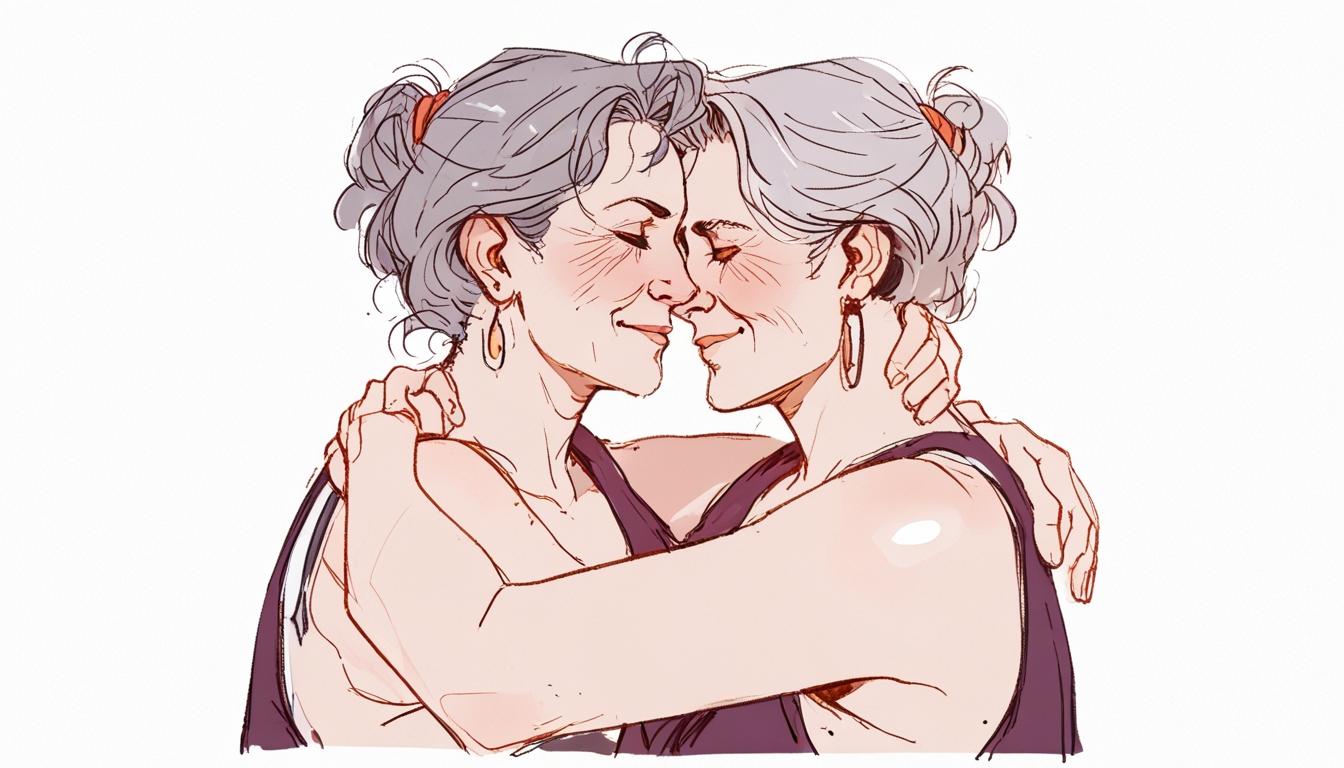The Midlife Shift: Why More Women are Embracing Same-Sex Relationships
In recent discussions surrounding relationship dynamics, a palpable shift has emerged, particularly among middle-aged women expressing a newfound openness to lesbian relationships. As many women vocalise their envy towards the seemingly uncomplicated lives of lesbians, a growing online community has formed—most notably, a Facebook group with over 100,000 members dedicated to exposing predatory male behaviour. The fruitless efforts of straight women in the dating scene often inspire them to contemplate an exit from the frustrations of heterosexual romance.
Julie Bindel, a prominent voice in this conversation, shares her insights after joining the aforementioned Facebook group while researching for her book, "Lesbians: Where Are We Now?" She encounters a striking commonality among her straight female friends: the prevailing dissatisfaction with their experiences in the dating world. One acquaintance even remarked that receiving unsolicited explicit photos before a first date had become a weary norm.
This growing inclination amongst straight women to consider same-sex relationships is underscored by data from the Office for National Statistics (ONS), which indicates that the percentage of young women in the UK identifying as bisexual or attracted to the same sex surpassed 10% in 2022. Despite the lack of specific statistics concerning middle-aged women, numerous anecdotes abound, such as those shared by a woman who, after escaping the clutches of domesticity, found love unexpectedly with another woman during a feminism-focused summer school.
The stories are numerous: from seasoned academics attending lesbian events to women exploring their sexuality later in life, it appears that a range of factors is influencing this trend. One participant at a recent gathering revealed that a disheartening experience with a male date—marked by neglect and disinterest—was the catalyst for her decision to embrace her attraction to women.
As Bindel points out, many midlife women undergo a transcendental transformation during this stage of their lives; freed from the oppressive scrutiny of traditional societal expectations, they thrive in their careers and personal lives. This newfound confidence drives them to seek partners who align with their desires, often leading to an exploration of same-sex attractions previously dismissed.
Cultural shifts also play a significant role in this movement. Sociologist Jane Ward's research highlights that many women might find themselves in heterosexual relationships more out of convention than genuine desire. This “straight by cultural default” mentality has become increasingly scrutinised, particularly as the generational gap in understanding intimacy and relationships widens. As hardline masculinity persists, some women find the dating scene increasingly alienating, prompting a shift in preferences.
The ubiquity of toxic masculinity and a culture saturated with misogynistic undertones—often exacerbated by the accessibility of explicit content—negatively impacts women's experiences with men. Many straight women are realising that the emotional labour and mediocrity exhibited by their male counterparts can render heterosexual relationships less appealing. Ramifications of this dynamic extend further, with studies revealing that divorced men often experience negative health outcomes because they have relied heavily on their partners for emotional support and domestic responsibilities.
In contrast, women are socially conditioned to maintain higher personal standards, resulting in a more conscientious approach to health and relationships. This disparity not only affects how women view their own self-worth but also how they perceive potential partners. More women are finding appeal in the idea of romantic relationships with other women, viewing these partnerships as opportunities for emotional fulfilment and companionship without the burden of caretaking.
Furthermore, it is essential to recognize that the journey to accept one's sexuality is often non-linear. Many women report childhood crushes on female peers or fleeting attractions that they subsequently dismissed as inconsequential. As pressures of conformity lessen and acceptance grows, more women are courageously exploring these feelings, rejecting previously held notions that prioritised heterosexual unions.
As personal anecdotes reveal, many women who come out later in life do so without regret. Bindel believes that a significant number of women remain unaware of their potential for lesbian relationships due to societal constraints. In an era where sexual liberation is increasingly celebrated, it appears more women are discovering the freedom to explore same-sex relationships, potentially leading to a greater understanding of their sexual identities.
In essence, as divorces rise and societal norms evolve, many women are reclaiming their sexual narratives. Whether rooted in midlife disillusionment with men or simply a desire for deeper emotional connections, the increasing visibility of queer identities invites a reckoning for many women, urging them to explore love and intimacy on their own terms.
In this context, the movement towards embracing same-sex relationships reflects not just personal liberation but a broader societal shift, encouraging women to defy outdated expectations and pursue fulfilling, authentic connections—regardless of gender.
Have you come out in midlife? Share your story to contribute to this vital conversation on sexual identity and relationship dynamics.
Reference Map:
- Paragraph 1 – [1], [2]
- Paragraph 2 – [1], [5]
- Paragraph 3 – [1], [3]
- Paragraph 4 – [1], [6]
- Paragraph 5 – [1], [4]
- Paragraph 6 – [7]
- Paragraph 7 – [1], [5]
Source: Noah Wire Services
